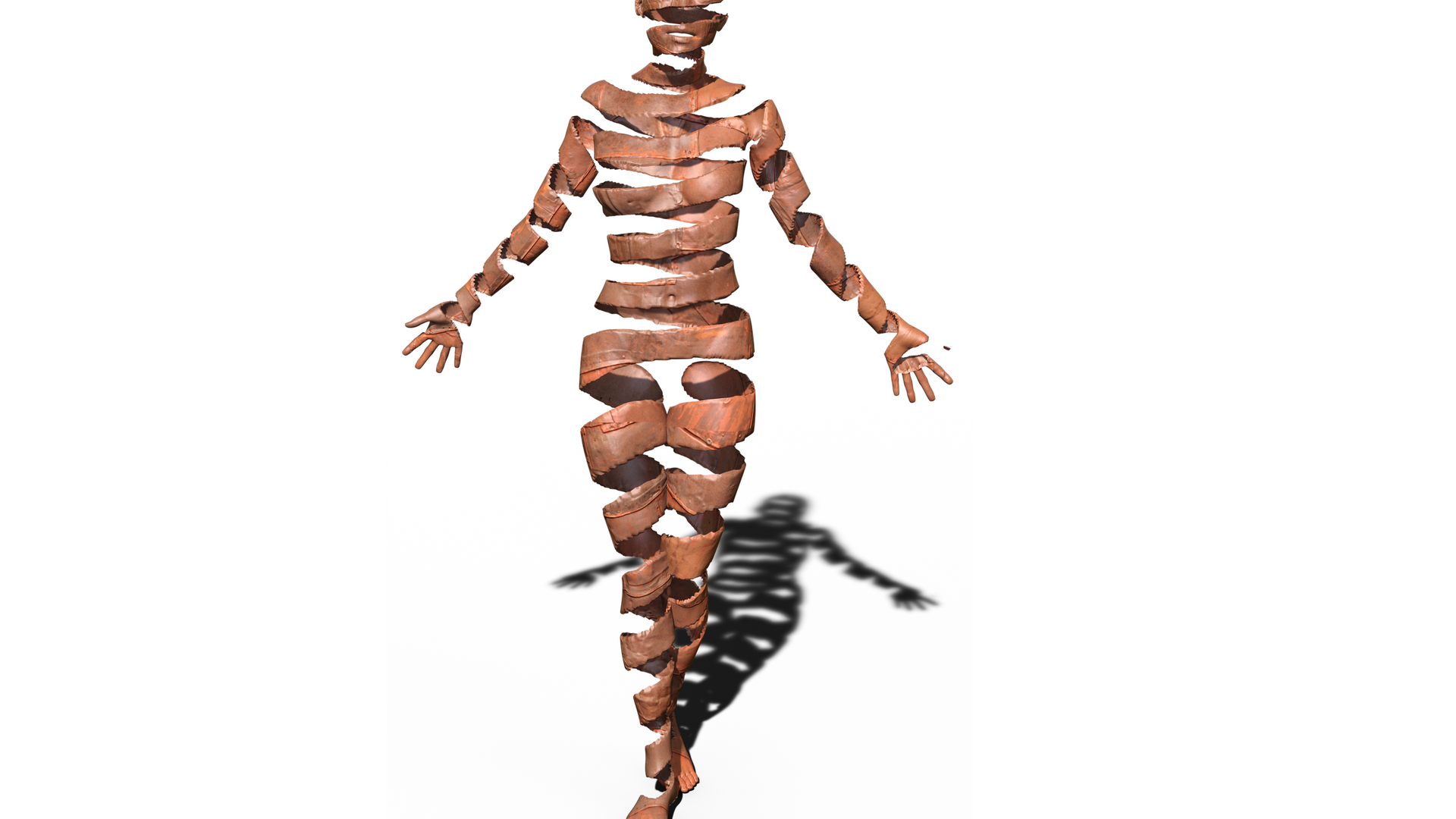https://sputnikglobe.com/20220401/filling-the-gaps-first-complete-human-genome-sequence-decodes-the-8-missing-since-2003-milestone-1094386140.html
Filling the Gaps: First Complete Human Genome Sequence Decodes the 8% Missing Since 2003 Milestone
Filling the Gaps: First Complete Human Genome Sequence Decodes the 8% Missing Since 2003 Milestone
Sputnik International
In 2003, the Human Genome Project triumphantly announced an essentially complete human genome sequence. However, 8% of some genomic regions remained unresolved... 01.04.2022, Sputnik International
2022-04-01T10:33+0000
2022-04-01T10:33+0000
2022-04-01T10:33+0000
genome
dna
https://cdn1.img.sputnikglobe.com/img/107044/28/1070442837_0:161:2872:1777_1920x0_80_0_0_e87a7e3954a0f179d92eb77142570562.png
Scientists have finally finished the job of sequencing the human genome, almost twenty years after the Human Genome Project made history deciphering 92%.The first complete, gap-free sequence of a human genome has been unveiled by a collaboration of nearly 100 scientists from the Telomere-to-Telomere (T2T) Consortium.Since that breakthrough in 2003, the missing about 8%, including large stretches of highly repetitive sequences, had puzzled scientists due to technical difficulties in sequencing them.The research 'filling the gaps', that introduces 400 million letters to the previously sequenced DNA, was outlined in six papers published in the journal Science.It was previously available in pre-print, thus enabling other teams to use the sequence in their studies.New Tools Reveal Enigmatic ComponentsWhile previous tools could sequence only small sections of DNA at once, two newly-emerged DNA sequencing technologies allowed scientists to finally reach their cherished goal. The first was the Oxford Nanopore DNA sequencing method, able to sequence up to 1 million DNA letters at once. The PacBio HiFi DNA sequencing method, which can read 20,000 letters with 99.9% accuracy, offered another opportunity to decode big chunks of DNA at once.Furthermore, the team was able to use an unusual cell type that only contains DNA inherited from the father, while most cells in the body contain two genomes – a maternal copy and a paternal copy.The new research used DNA from a group of cells called a complete hydatidiform mole, which contains a duplicate of the paternal set of DNA. This simplifies the genome so that scientists have to sequence only one set rather than two sets of DNA.“In the future, when someone has their genome sequenced, we will be able to identify all of the variants in their DNA and use that information to better guide their healthcare,” said Dr Adam Phillippy, of the National Human Genome Research Institute in Maryland and co-chair of the consortium.The previously missing 8% of the human genome that contained DNA regions with several repetitions is interesting in that the repeated stretches offered a lot of human genetic variation. It is this variability in those regions that may now provide crucial clues to the evolutionary changes of our ancestors, claim the scientists. Some uncovered genes are even responsible for making the brains of humans larger than those of other primates.Clarifying the importance of unmasking what the previously unknown genes coded, Evan Eichler, a Howard Hughes Medical Institute investigator at the University of Washington and the research leader, said on Thursday:Rajiv McCoy of Johns Hopkins University, a participant in the Telomere to Telomere (T2T) consortium, also highlighted the importance of “opening up” the new parts of the genome, stressing that scientists believe “there will be genetic variation contributing to many different traits and disease risk.”Looking ahead, he voiced the hope that some ten years since, we will be able to sequence individuals' genomes in the manner of a routine medical test, costing less than $1,000, promising that his team would work toward that goal.
https://sputnikglobe.com/20210830/sequenced-dna-sheds-light-on-origins-of-first-scandinavians-1083749587.html
https://sputnikglobe.com/20220301/scientists-propose-measures-to-ensure-well-being-of-gene-edited-babies-1093476153.html
Sputnik International
feedback@sputniknews.com
+74956456601
MIA „Rosiya Segodnya“
2022
News
en_EN
Sputnik International
feedback@sputniknews.com
+74956456601
MIA „Rosiya Segodnya“
Sputnik International
feedback@sputniknews.com
+74956456601
MIA „Rosiya Segodnya“
genome, dna
Filling the Gaps: First Complete Human Genome Sequence Decodes the 8% Missing Since 2003 Milestone
In 2003, the Human Genome Project triumphantly announced an essentially complete human genome sequence. However, 8% of some genomic regions remained unresolved as technologies for sequencing DNA at that time were not up to the task.
Scientists have finally finished the job of sequencing the human genome, almost twenty years after the Human Genome Project made history deciphering 92%.
The first complete, gap-free sequence of a human genome has been
unveiled by a collaboration of nearly 100 scientists from the Telomere-to-Telomere (T2T) Consortium.
“These parts of the human genome that we haven’t been able to study for 20-plus years are important to our understanding of how the genome works, genetic diseases, and human diversity and evolution,” said Dr Karen Miga, a scientist at the University of California, Santa Cruz who co-led the team behind the project.
Since that breakthrough in 2003, the missing about 8%, including large stretches of highly repetitive sequences, had puzzled scientists due to technical difficulties in sequencing them.
The research 'filling the gaps', that introduces 400 million letters to the previously sequenced DNA, was outlined in six papers
published in the journal Science.
It was previously available in pre-print, thus enabling other teams to use the sequence in their studies.
New Tools Reveal Enigmatic Components
While previous tools could sequence only small sections of DNA at once, two newly-emerged DNA sequencing technologies allowed scientists to finally reach their cherished goal. The first was the Oxford Nanopore DNA sequencing method, able to sequence up to 1 million DNA letters at once. The PacBio HiFi DNA sequencing method, which can read 20,000 letters with 99.9% accuracy, offered another opportunity to decode big chunks of DNA at once.
Furthermore, the team was able to use an unusual cell type that only contains DNA inherited from the father, while most cells in the body contain two genomes – a maternal copy and a paternal copy.
The new
research used DNA from a group of cells called a complete hydatidiform mole, which contains a duplicate of the paternal set of DNA. This simplifies the genome so that scientists have to sequence only one set rather than two sets of DNA.

30 August 2021, 07:02 GMT
“In the future, when someone has their genome sequenced, we will be able to identify all of the variants in their DNA and use that information to better guide their healthcare,” said Dr Adam Phillippy, of the National Human Genome Research Institute in Maryland and co-chair of the consortium.
The previously missing 8% of the human genome that contained DNA regions with several repetitions is interesting in that the repeated stretches offered a lot of human genetic variation. It is this variability in those regions that may now provide crucial clues to the evolutionary changes of our ancestors, claim the scientists. Some uncovered genes are even responsible for making the brains of humans larger than those of other primates.
Clarifying the importance of unmasking what the previously unknown genes coded, Evan Eichler, a Howard Hughes Medical Institute investigator at the University of Washington and the research leader, said on Thursday:
"It turns out that these genes are incredibly important for adaptation… They contain immune response genes that help us to adapt and survive infections and plagues and viruses. They contain genes that are ... very important in terms of predicting drug response."
Rajiv McCoy of Johns Hopkins University, a participant in the Telomere to Telomere (T2T) consortium, also highlighted the importance of “opening up” the new parts of the genome, stressing that scientists believe “there will be genetic variation contributing to many different traits and disease risk.”
“Truly finishing the human genome sequence was like putting on a new pair of glasses. Now that we can clearly see everything, we are one step closer to understanding what it all means,” stated Dr Adam Phillippy.
Looking ahead, he voiced the hope that some ten years since, we will be able to sequence individuals' genomes in the manner of a routine medical test, costing less than $1,000, promising that his team would work toward that goal.





